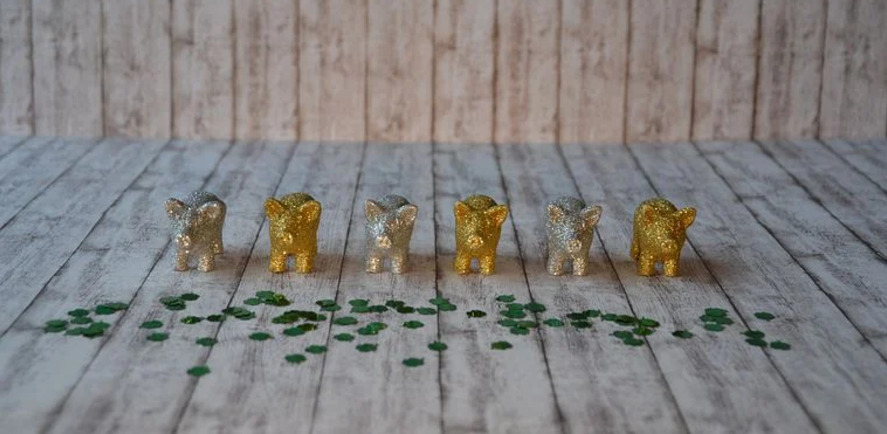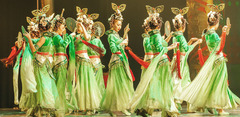New Year’s Eve and New Year’s Day are fast-approaching, and it is a time of great excitement and celebration for people around the world. Filled with different traditions and celebrations by diverse peoples worldwide, in this article you can find more about New Year’s Eve and Day to better understand this centuries-old celebration and why this festive period is important to so many people.
Why not find good recipes for snacks and meal ideas, beer and wine choices, restaurants, and even look to spreading festive cheer to many others through good causes to make your New Year’s celebrations even more special this year? It is time to bid farewell to the old year and bring in the New Year in style!
What are New Year’s Eve Traditions?
Fireworks displays, dress up parties, eating special New Year’s Day foods, sipping champagne and singing “Auld Lang Syne”, and of course kissing a loved one at the stroke of midnight, are just some of the most customary New Year’s Eve traditions. Don’t forget, New Year’s is also an occasion steeped in superstition with many good luck traditions to observe too.
Why are New Year’s Eve and Day Traditions Important?
While you might remember a few New Year’s traditions, countries and cultures around the world ring in the New Year in distinct ways to mark this special occasion. Yet, a universal belief amongst them all is bidding farewell to the old year to bring in a New Year filled with hope. In this way, good luck traditions play a central part of New Year’s Eve and Day, bring friends and family together to “get rid of the old and bring in the new.”
New Year’s Eve Traditions in America:
As New Year’s festivities take on a unique character in 2020 because of the COVID-19 pandemic, several typical American New Year’s Eve traditions will still carry on in an adjusted form to suit these times. The world-famous ball drop at New York City’s Times Square will still go ahead as always, but they will permit no spectators. This event will be broadcast live on TV to homes across America (and the world) for all to enjoy. Other major American New Year’s Eve traditions include singing the Scottish ballad “Auld Lang Syne”, popping the cork of a bottle of champagne and toasting the New Year, and kissing a loved one at the stroke of midnight.
New Year’s Eve Traditions Around the World:
Ringing in the New Year’s Eve in other countries share much the same traditions and festivities. Each culture marks this occasion with unique customs. In Italy, they take “out with the old” more literally than anywhere else: it is tradition to throw out the window all old stuff at midnight as a belief that it will bring good luck in the New Year. Italians also forego champagne for their preferred prosecco to toast with on New Year’s Eve.
Similarly, the Irish also enjoy a good party, and New Year’s Eve presents one of the most enjoyable events. They spend the last day of the year cleaning their homes, fitting clean linen on their beds, and stocking up on food, so they start the New Year afresh and prosperously. They spend the evening lighting large fires and holding feasts for friends and family in a tradition they believe brings light into the dark.
New Year’s Day Traditions:
Typically, New Year’s Day traditions center on family-and-friends gatherings. Enjoying champagne, special foods, throwing confetti, toasting each other, attending parades, and enjoying fireworks displays are some of the most popular New Year’s Day traditions. Another important aspect of New Year’s Day traditions is sharing of New Year’s Resolutions. Setting goals and aims to improve their lives, people will use New Year’s Resolutions to lose weight, save more money, aim for a raise and promotion at work, and to exercise more frequently. While for some New Year’s Resolutions are already broken in the first weeks of January, it is fun to see how long we can all make our Resolutions last.
New Year’s Good Luck Traditions:
Superstitions abound at this time of year. To ensure greater happiness, success, and prosperity in the New Year, and trying to live up to our New Year’s Resolutions, people focus on good luck traditions to make the next year a better one. Some people believe that keeping a little money in your pocket on the first day of the New Year will ensure that you will have some money on every day of the year thereafter. Some cultures believe in eating 12 grapes at midnight to bring good luck for the next year, while the Southern tradition of eating black-eyed peas on New Year’s Day will bring good luck and prosperity. Scaring evil spirits away is a timeless tradition and one that many mark by using noisemakers to scare off the bad omens on New Year’s Day.
New Year’s Food Traditions in America and Around the World:
Around the world, food also plays a large role in New Year’s traditions. Americans favor circular-shaped foods, black-eyed peas, cabbage and pork-based dishes on New Year’s Day. The French celebrate with champagne, the Italians with dishes spread with lentils and pork sausages, the Germans enjoy their good-luck food of pretzels, Swedes prepare dishes of pickled herring as this fish is symbolic of fertility, a long life and prosperity, while the Japanese tuck in bowls of toshikoshi soba which is a soup of buckwheat noodles that when translated means “to climb or jump from the old year to the new.”
Closing:
New Year’s Eve and New Year’s Day traditions and rituals are steeped in centuries of history. They base most on bringing good luck and prosperity to the New Year, with celebrations centered on family and friends gathering together. While current times require different ways of celebrating, we can use these traditions and customs in alternative ways to still bring good luck and a better year.
Call-To-Action:
Find more about New Year’s Eve and Day in this article to better understand the traditions, superstitions and customs of this centuries-old celebration.






